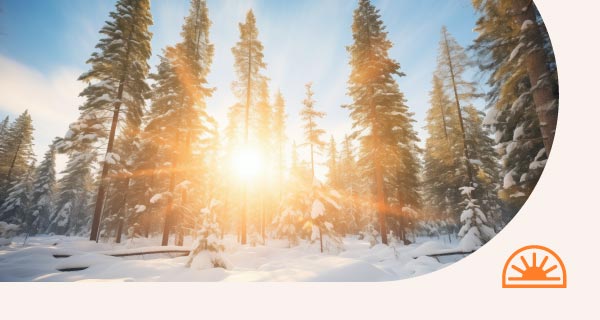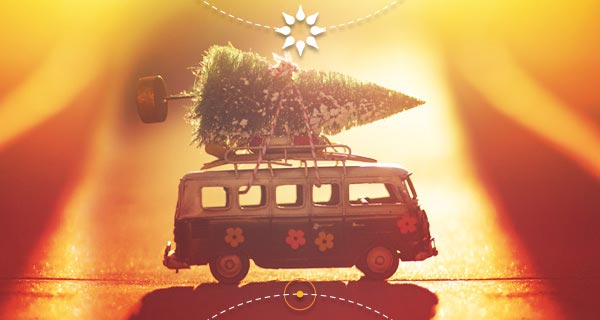Actor and director Woody Allen once said, “I’m not afraid to die. I just don’t want to be there when it happens.” Woody’s not alone. In fact, many Americans fear death. Western culture seems to deny mortality, even though it’s one of the things that we can certainly count on in life.
We place spring mattresses in our caskets (do you really need the back support at this point?) and embalm our loved ones in order for the situation to feel familiar, all the while subtly disguising death itself. We’ve even turned a sacred day such as All Hallow’s Eve into a holiday that’s all about (consumer) treats and scary tricks. And it doesn’t help that many religious folk have a dim view of Halloween since it now includes references to Witchcraft, Witches, ghosts, vampires and Satan.
“While death is a topic largely avoided by many Americans, the active remembrance of deceased ancestors and loved ones is traditional among diverse cultures, says Jana Baldridge Vargas author of The Promise and The Passion, a Reflective Exploration of Death, Loss and Living Fully.
The celebration
One such celebration unfolds on November 1 and 2, when Hispanic cultures celebrate All Soul’s Day and All Saint’s Day, more commonly known as Dia de Los Muertos or “Day of the Dead.” The traditional observance calls for departed children to be remembered during the first day of the festivity (the Day of the Little Angels – “DÌa de los Angelitos”), and for adults to be remembered on the second day.
Celebrating Day of the Dead gives us an opportunity to examine our own thoughts about death and its reality in our daily lives. Exploring how other cultures embrace death and loss can bring an expanded perspective into our own lives.
The Aztecs
Day of the Dead was a ritual celebration of the Aztecs that was later “Christianized” by the Spaniards who moved the festivities from August to November to coincide with the Christian holiday of All Hallows Eve (DÌa de Todos Santos),” explains Janine Mariscotti, a professor at La Salle University in Philadelphia who teaches courses in death, dying and mourning.
The Aztecs viewed death as a continuation of life. They were not fearful of death, rather they believed that people are “more awake” in death than alive. Thus, the Day of the Dead is not a morbid occasion, but rather a festive time. The ritual both mocks death and celebrates it, adds Mariscotti.
Here’s how you can embrace the day in your own way:
Symbols: The most common symbol of the holiday is the skull and skeleton, or calavera – depicted playfully to represent the joyous return of the souls of the dead and their reunion with family and friends.
Visit exhibitions: You can Google any number of “Day of the Dead” exhibits going on in cities throughout the United States. Try city art galleries, restaurants or Mexican areas of the city you live in.
Read books: Explore topics of reflection and loss. Such tomes include Mitch Albom’s Tuesdays with Morrie and his latest, For One More Day, Joan Didion’s The Year of Magical Thinking, and Elizabeth Berg’s The Year of Pleasures.
Start a new tradition: Use your own home to celebrate and acknowledge those who have passed. For instance, invite close friends, light some candles and eat and imbibe. You don’t necessarily have to hold a seance to welcome your departed loved ones into your home. Rather hold the belief that if the dead themselves wish it, they will return to share in the love and celebration of the occasion.
Create an altar: Decorate it with items you believe are beautiful and attractive to the souls of your deceased. Such items include offerings of flowers and food, but can also include items that will remind the living of the departed. And the things that the dead prized and enjoyed while they lived. To honor my aunt and welcome her, I place a scratch lottery ticket on my altar because she’d always come to our house with one for my sister and me. I place it beside a photo and a scarab ring that she owned.
Belongings entice the dead and assure that their souls actually return to take part in the remembrance. In very traditional settings, typically found only in native communities, the path from the street to the altar is actually strewn with petals to guide the returning soul to the bosom of the family.
Visit a loved one at a cemetery: Traditionally on Dia de los Meurtos, family members engage in sprucing up gravesites. They decorate with flowers and enjoy a picnic, interacting socially with other family and community members who’ve gathered there. Celebrants believe that the souls of the dead return and are all around them. Families remember the departed by sharing stories and serving their favorite foods at their grave. They also eat sugary confections in a variety of animal or skull shapes and a special egg-batter bread (“pan de muerto” or bread of the dead). Incidentally, in southern Mexico, in the city of Puebla, it is good luck to be the one who bites into the plastic toy skeleton hidden by the baker in each rounded loaf.
Cemetary walk: If you don’t have a dearly departed in the city that you live in, why not visit the cemetery anyway? You can honor the dead by taking a walk through the grounds. Grave sites can be tranquil and peaceful. Visiting the dead can be an important social ritual that recognizes the cycle of life and death that is human existence.
Gifts: Friends and family members also give one another gifts consisting of sugar skeletons or other items with a death motif, and the gift is more prized if the skull or skeleton is embossed with one’s own name.
Death remains a profound mystery, which is why the Day of the Dead ritual aims at assisting the living in finding a way to hold, frame, and manage the mystery. The holiday celebrates those who’ve died and helps the living maintain a connection with the dead. After all, who is to say that death isn’t really a continuation of life?
Do you want to connect with someone who has passed? Get a psychic reading today. Call
1.800.573.4830 or
click here now.



